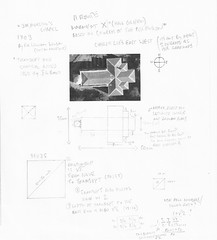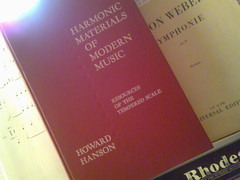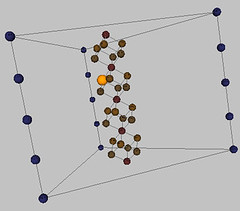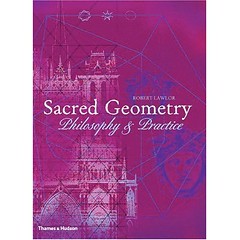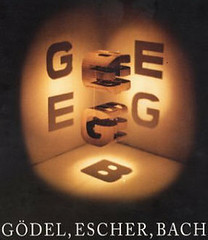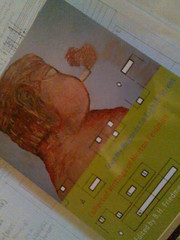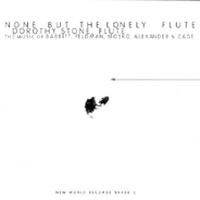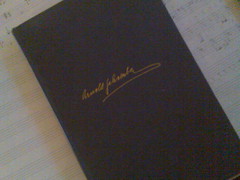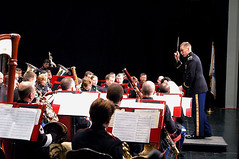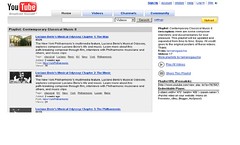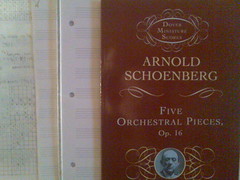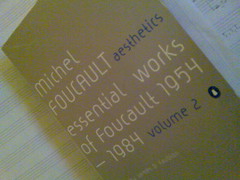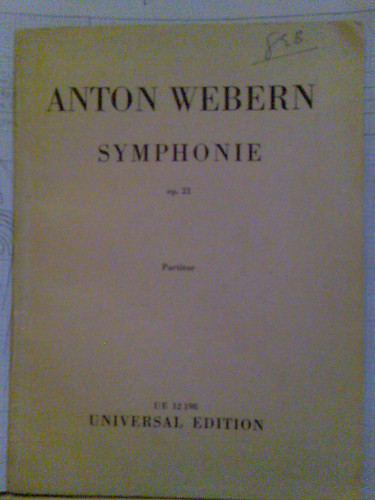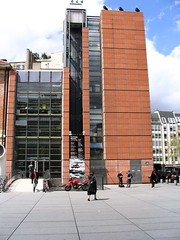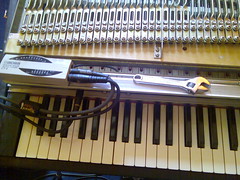 Kyle Gann
Kyle Gann posted a
blog entry about
David Byrne`s recent
article and/or review of
Zimmermann`s opera
Die Soldaten. I posted a response on Gann`s blog which never appeared for some reason, so i`ll post it here instead....
This line [from Byrne`s article] seems to sum up the article from my perspective...(I didn`t take much notice of the guff about what is or is not 'accessible', there is no metric for that)
'The opera is a classic of 12-tone technique, which means that all 12 notes of the chromatic scale are permissible at any time, and none are emphasized over and above the others.'
This is wrong, the idea that all 12 notes are 'permissible at any time', that contradicts the serial principle (and connotes randomness), and if we are talking about 'free atonality' then it doesn`t make sense either as most of the music classified as such uses limited collections of intervals/pitches which are manipulated by the usual methods (transposition, inversion, retrograde, sets and subsets, complements and so on), a piece may use the full chromatic but does so in methodical or rational way, all 12 pitches or 6 intervals classes (if you like) are certainly not 'permissible at any time' (I am generalising but most music of this type seems to work this way to my knowledge).
The same could also be said of tonality (you could use the full chromatic while making use of a clear tonic and/or using standard triad formations for instance, these different harmonic practices are not very far apart in my view, however shades of grey don`t make for good copy)
On the one hand it`s good that Byrne is taking an interest in contemporary music, on the other hand it isn`t as he is misrepresenting it or aspects of it, I am not surprised as it`s fairly complicated stuff (harmony in general, tonal or otherwise).
I don`t have a solution or opinion on this, should Byrne and other mainstream/popular figures not pass comment because they lack the knowledge or should they speak up even if their comments misrepresent the subject?.
I don`t know, upsides and downsides, I think I`m past caring (almost, if I really didn`t care I wouldn`t post anything).
I`ll just develop this point about 'accessibilty' briefly. For something to be 'accessible' you need to know what it is for, you need to understand its
function.
This was not discussed in Byrne`s article nor in Gann`s blog entry, which is odd because the whole issue revolves around the function of music/s as far as I can see. Both writers assume we all know what music is for, and that we can discuss music and its 'accessibilty' without defining our terms.
I think not, it could be argued that each 'innovation' in Western music, or any music, means to change the music`s function. Consider Bach`s cello suites, Beethoven`s 9th, Webern`s Symphonie Op21 and Stockhausen`s Kontakte, is this music all created for the same purpose?.
Broadly speaking, no, although this is a subjective issue, as per usual. Even if we ignore the production aspects of the music - which might seem fair given that a few hundred years separates the oldest and newest works and the instrumental forces vary - and its historical reception and focus on contemporary reception issues we find that people listen to this music for different reasons, it serves different functions in people`s lives, it depends who you ask, and when.
So how can we talk about 'accessibility' when we don`t know what is being accessed and who by and what for?. The simple answer is we can`t. We have to contextualise the issue before we can make a judgement, is Stockhausen`s Kontakte 'accessible' for a group of elderly people on a cruise ship? ('diffused' in the dining hall perhaps?).
Probably not, the music is not well designed for that function (relaxing background music to eat by). Bach`s Cello Suites on the other hand would be fine, is this music more accessible?, in this hypothetical context yes, partly because it is more easily ignored, or tuned in and out of so to speak. You`ll be able to find contexts where music is or is not 'accessible', this says less about the music and more about the circumstances (Stockhausen`s electronic works are more 'accessible' to fans of 'Electronica' for instance, many of whom find Bach 'boring', or 'inaccessible' if you like)
Even the idea that music is soley an art of the audible is not something that should be assumed, as if it were nature not history. Not all music is written to be judged or experienced purely in terms of how it sounds, there is more to it than that, though you wouldn`t guess it from reading Byrne`s article or Gann`s critique of it. I`ll end by quoting
Nicholas Cook, from his book
Music, Imagination and Culture.
Audibility, in short, is not everything in music. Dahlhaus writes that 'an undogmatic theory of art must recognize that the criterion of audibility, of complete realization by perception, is not a natural law of aesthetics but a postulate of historically limited scope. By rigorously restricting the concept of music or of "music proper" to the perceptible, one curtails historic reality for the sake of a dogma not older than the eighteenth century.' ( 1983: 54.)
One cannot reasonably demand that music must, by definition, yield all its meaning in perception. It would obviously be narrow-minded to deny the aesthetic validity of Machaut's palindromic chanson Ma fin est mon commencement, or to refuse to recognize it as music, simply because of the impossibility of grasping its structure in purely perceptual terms; it is equally narrow-minded to reject a piece of serial music (as people actually do, or at least used to do) on the grounds of its consciously adumbrated organization, without giving it a hearing first.
If, however, such a work were to yield nothing of interest in perception--if, in Dahlhaus's words, it remained 'a surplus intention which does not attain phenomenality' ( 1987: 225)--then one would have good reason for rejecting it, or even for failing to recognize it as music; for without the criterion of perceptual gratification there would be no means of drawing a distinction between music on the one hand and numerological speculation, theatrical activity, or mere mechanical exercise on the other. Consequently, while a musical composition may not be exhausted in perception, some degree of meaningful or gratifying perceptual engagement with it is a prerequisite if one is to approach it as music at all.
















